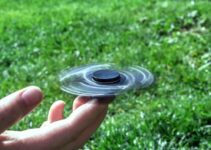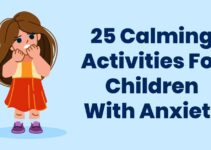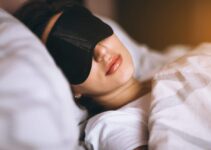Obsessive compulsive disorder (OCD) is a mental health condition that is characterized by obsessive or intrusive thoughts that trigger compulsive behaviors. The obsessions and compulsions are so severe they interfere with daily life. An intrusive or obsessive thought is a thought that overwhelms all other thinking.
Symptoms
Examples of obsessive thoughts include:
- A hyperfocus on germs and cleanliness
- Checking repeatedly to determine if a door is locked or the stove is turned off
- Believing that everything must be “just right”
- Having unwanted and/or disturbing thoughts about hurting others
- Having unwanted and/or disturbing sexual thoughts
- An extreme fears that something bad things is about to happen [1]
Note: Obsessions can be so intense that they cause anxiety and distress in a person with OCD. Compulsions, on the other hand, are repetitive behaviors that occur to ease the obsession-based anxiety. These behaviors are considered “rituals.”
Examples of compulsions include:
- Frequent hand-washing to ease obsession with germs
- Physically checking the door by repeatedly locking and unlocking it, turning off the stove, etc.
- Repeating actions until things are “just right”
- Placing things in a specific order
- Having mental compulsions, such as: excessive praying, reviewing things over and over, etc.
- Frequently apologizing or confessing
- Obsessing over “lucky” words or numbers
- Excessively seeking reassurance (i.e. frequently asking, “Am I okay?”) [1]
- Compulsions that are performed to receive relief from the obsessions – Compulsive behaviors often do not completely relieve obsession-based anxiety.
Diagnosis
An individual is diagnosed with OCD once the obsessions and compulsions become so time-consuming that they interfere with normal daily functioning, such as: going work or school and/or while spending time with others. Note: A significant amount of time is considered at least one hour a day. There is so specific “test” used to diagnose OCD. Rather, a diagnosis is made via an interview with a trained clinician. [6]
Progression & Associated Conditions
With OCD, the obsessions and compulsions eventually worsen over time. Its onset usually occurs during childhood, transcending into the teen years, and continuing into young adulthood. It rarely presents after the age 35. Approximately 2% of the US population (nearly 1-in-40 people) will be diagnosed with OCD. [2]
It is important to understand that individuals with OCD may also have other conditions, such as: tic disorder (sudden brief repetitive muscle/body movements). Examples of motor tics include: eye blinking, facial grimacing shoulder shrugging, head or shoulder jerking, etc. Verbal tics include: repetitive grunting, throat clearing, and/or stuffiness. [4]
OCD is also associated with other mental health conditions, such as: anxiety, depression, and body dysmorphic disorder, the faulty belief that the body is in some way “abnormal.”[4]
Risk Factors
Listed below are the risk factors for OCD:
- Genetics
OCD appears to have a genetic component. More specifically, both twin and family studies show that an individual is at a higher risk of developing OCD, if he/she has a first-degree relative (i.e. sibling, parent and/or child) with the condition. This individual also has a higher risk, if his/her relative developed OCD, as a child. [4]
- Brain Structure
There appears to be some differences brain structure between an individual with OCD and one without it. More specifically, in the brain structure of those with OCS, the frontal cortex and subcortical areas are impacted. Also, the neurotransmitter, serotonin, appears to play a role in the development of OCD. Still, the exact role of brain structure and OCD is currently unknown. [4]
- Environment
Another risk factor for developing OCD is abuse (i.e. sexual, emotional, mental, and physical) and/or other childhood trauma(s). [4]
- PANDAS/PANS
What is PANDAS? Well, it is pediatric autoimmune neuropsychiatric disorder and it is normally associated with streptococcus or pediatric acute-onset neuropsychiatric syndrome (PANS). PANDAS/PANS is a rare disorder that causes a rapid and severe onset of OCD behaviors.
Other PANDAS/PANS symptoms include anxiety: tics (abnormal muscle movements), personality changes, a significant decline in problem-solving and handwriting abilities, sensory sensitivity, and/or restrictive eating patterns. [3]
It is estimated that 1-in-200 children have or will develop PANDAS/PANS, during childhood. It is also believed that PANDAS/PANS occurs when an infectious agent, like: streptococcus, mycoplasma, mononucleosis, Lyme disease or H1N1 flu virus attacks various parts of a person’s brain. [3]
TREATMENT
How is it treated? Well, treatment typically includes: medication, therapy, or a combination of medication and therapy.
- Medication
Various medications are used to treat OCD, some of which impact serotonin, such as: serotonin reuptake inhibitors (SRIs) and selective serotonin reuptake inhibitors (SSRIs). These drugs are also used to treat depression. An example of an SRI that is commonly used to treat OCD in children and adults is the tricyclic antidepressant, Clomipramine. Examples of SSRIs used to treat OCD include: Fluoxetine, Fluvoxamine, and Sertraline. [4]
The dosage for OCD is usually higher than the dosage for depression. It is important to note that it make take these medications longer to work for OCD, than it takes for them to work for depression (i.e. 8-12 weeks to see improvement for OCD vs. 6-8 weeks to see improvement for depression). [4]
Moreover, it a common treatment for those with OCD and tics is antipsychotic drugs, such as: Risperidone. However, at this time, research is mixed on the effectiveness of antipsychotics to treat OCD alone. [4]
- Therapy
Another common OCD treatment is cognitive behavior therapy (CBT). According to recent research studies, CBT is as effective as medication, in the treatment OCD. Another therapy that has shown effectiveness is “habit reversal training.”
In addition, a specific type of CBT called, exposure and response prevention (EX/PR) is now being used to treat OCD in some people. Note: EX/PR is the most used “add-on” treatment for OCD, when traditional medications do not work. [4]
- Self Help
More and more people are turning to self-help methods to supplement their prescribed treatment plan. These methods typically include: participation in support groups, stress management, relaxation techniques, and mindfulness practices. The goal of self-help methods is to help you better manage your daily stress – common triggers for OCD symptoms. [5]
Helpful Videos
Below are helpful OCD-related videos that can help you better manage your condition:





https://youtu.be/g1fYtDWMdUM
Helpful Resources
Listed below are helpful OCD-related resources that can help you better manage your condition:
References
- International OCD Foundation. (2018). What is OCD? Retrieved from https://kids.iocdf.org/what-is-ocd/
National Alliance on Mental Health (NAMI). (2018). Obsessive-compulsive disorder. Retrieved from https://www.nami.org/Learn-More/Mental-Health-Conditions/Obsessive-compulsive-Disorder/Overview
- PANDAS Network. (2018). What is PANDAS? Retrieved from https://www.pandasnetwork.org/understanding-pandaspans/what-is-pandas/
- National Institute of Mental Health (NIMH). (2018). Obsessive compulsive disorder. Retrieved from https://www.nimh.nih.gov/health/topics/obsessive-compulsive-disorder-ocd/index.shtml
- Kelly, O. (2018). The basics of OCD self-help. Very Well Mind. Retrieved from https://www.verywellmind.com/ocd-self-help-2510625
- International OCD Foundation. (2018). How is OCD diagnosed? Retrieved from https://iocdf.org/about-ocd/how-is-ocd-diagnosed/










